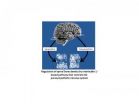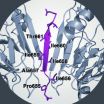The discovery, published in the prestigious scientific journal, Nature Genetics, on 26 August 2012, was conducted collaboratively by scientists from the Singapore Eye Research Institute (SERI)/Singapore National Eye Centre (SNEC), Genome Institute of Singapore (GIS), National University of Singapore (NUS), National University Hospital's Department of Ophthalmology and Tan Tock Seng Hospital.
The team of scientists led an international consortium that carried out a genome-wide association study (GWAS) of 1,854 PACG cases and 9,608 controls of over five sample collections in Asia. They performed validation experiments in another 1,917 PACG cases and 8,943 controls collected from a further six sample collections from around the world. A total of 1,293 Singaporeans with PACG and 8,025 Singaporean controls were enrolled in this study. This work is the first to study PACG genetics using a genome-wide perspective.
This finding confirms the long-standing suspicion of Professor Aung Tin, the lead Principal Investigator of this project, who is Senior Consultant and Head of Glaucoma Service at SNEC, Deputy Executive Director at SERI, and Professor of Ophthalmology at NUS. Prof Aung has worked on PACG for over 10 years and believes from clinical observations that the disease is strongly hereditary.
"This provides further evidence that genetic factors play a role in development of PACG," said Prof Aung. "It is a major achievement for our Singapore team leading the largest international consortium of doctors and scientists involved in glaucoma research. The results may lead to new insights into disease understanding and open the possibility of novel treatments in the future as well as the potential of early identification of people at risk of the disease."
The study showcases one of many exciting scientific collaborations between GIS and SERI, and highlights the importance and significant advantages of inter-disciplinary collaborations between the two institutes under such joint efforts. The study was funded primarily by the Translational Clinical Research (TCR) program grant from the National Research Foundation that was awarded to SERI in 2008, as well as other grants from the National Medical Research Council (NMRC), Biomedical Research Council (BMRC), and funding from GIS.
GIS Acting Executive Director Prof Ng Huck Hui congratulated the team on the success of the project. "This is an exemplary demonstration of the potential power in genomics being used to dissect complex human diseases with hereditable predispositions. The collaboration between SERI and GIS is synergistic in many broad aspects, and it marries core strengths from both institutions."
Prof Wong Tien Yin, Executive Director at SERI and Provost's Chair Professor and Head, Department of Ophthalmology, NUHS, said, "This is a landmark finding, and may potentially change how we view PACG as a disease with genetic links. It highlights how a collective effort from scientists and clinicians and clinician-scientists can unravel diseases of major importance to Singapore. Because this disease is more common in Asians than in the Western populations, such studies will not be done in the US/Europe. This study has to be done in Asia as it is a disease with more implication for Asians. As such, Singapore has led the way forward."
Dr Khor Chiea Chuen, Principal Investigator, Human Genetics, at GIS added, "Modern genomics is a very powerful tool in dissecting the hereditable basis of common human diseases. It gives all of us a ray of hope, however far-fetched it may be, that one day we will be able to tailor treatments based on individual genetic profile."
"The information on genes involved in PACG has also opened up new and exciting research areas for us that we hope will culminate in new treatment modalities for angle closure glaucoma in the future," Said Dr Eranga Vithana, Associate Director, Basic and Experimental Sciences at SERI, and lead author of the paper.
Prof Janey Wiggs, Paul Austin Chandler Assoc. Professor of Ophthalmology, Harvard Medical School added, "This is a landmark study identifying three genes that contribute to angle-closure glaucoma, a form of glaucoma that is particularly common in Asians. These data are the first critical steps toward a better understanding of the underlying molecular events responsible for this blinding disease."
SERI is the national body for ophthalmic and vision research in Singapore based at SNEC and NUS. The GIS is a research institute under the umbrella of the Agency for Science, Technology and Research (A*STAR), Singapore.
### Notes to the Editor: Research publication: The research findings described in the press release can be found in the 26 August 2012 advance online issue of Nature Genetics under the title "Genome-wide association analyses identify three new susceptibility loci for Primary Angle Closure Glaucoma".
Authors: Eranga N. Vithana1,2#, Chiea-Chuen Khor1,2,3,4,5,6#, Chunyan Qiao7, Monisha E. Nongpiur1,2, Ronnie George8, Li-Jia Chen9, Tan Do10, Khaled Abu-Amero11,12, Chor Kai Huang13, Sancy Low14, Liza-Sharmini A. Tajudin15, Shamira A. Perera1, Ching-Yu Cheng1,2,6, Liang Xu16, Hongyan Jia7, Ching-Lin Ho1, Kar Seng Sim4, Ren-Yi Wu1,17, Clement C.Y. Tham9, Paul T.K. Chew2, Daniel H. Su1, Francis T. Oen1, Sripriya Sarangapani8, Nagaswamy Soumittra8, Essam A. Osman11, Hon-Tym Wong18, Guangxian Tang19, Sujie Fan20, Hailin Meng21, Dao T.L. Huong10, Hua Wang7, Bo Feng7, Mani Baskaran1, Balekudaru Shantha8, Vedam L. Ramprasad8, Govindasamy Kumaramanickavel8, Sudha K. Iyengar22, Alicia C. How1, Kelvin Y. Lee1, Theru A. Sivakumaran22, Victor H.K. Yong1, Serena M.L. Ting1, Yang Li15, Ya-Xing Wang16, Wan-Ting Tay1, Xueling Sim23, Raghavan Lavanya1, Belinda K. Cornes1, Ying-Feng Zheng1,2, Tina T. Wong1, Seng-Chee Loon2, Vernon K.Y. Yong18, Naushin Waseem14, Azhany Yaakub15, Kee-Seng Chia6, R. Rand Allingham24, Michael A. Hauser24, Dennis S.C. Lam9, Martin L. Hibberd3,6, Shomi S Bhattacharya14, Mingzhi Zhang13, Yik Ying Teo4,6,23, Donald T. Tan1,2, Jost B. Jonas25, E-Shyong Tai6,26,27, Seang-Mei Saw1,6, Do Nhu Hon10, Saleh A. Al-Obeidan11, Jianjun Liu4,6, Tran Nguyen Bich Chau28, Cameron P. Simmons28,29, Jin-Xin Bei30,31, Yi-Xin Zeng30,31,32, Paul J. Foster14, Lingam Vijaya8, Tien-Yin Wong1,2,6, Chi-Pui Pang9, Ningli Wang7#, and Tin Aung1,2#.
1. Singapore Eye Research Institute and Singapore National Eye Centre, Singapore.
2. Department of Ophthalmology, National University Health System & National University of Singapore, Singapore.
3. Infectious Diseases, Genome Institute of Singapore, Singapore
4. Human Genetics, Genome Institute of Singapore, Singapore
5. Department of Paediatrics, National University Health System & National University of Singapore, Singapore.
6. Saw Swee Hock School of Public Health, National University of Singapore, Singapore
7. Beijing Tongren Eye Center, Beijing Tongren Hospital, Capital Medical University, Beijing Ophthalmology & Visual Sciences Key Lab, Beijing, China
8. Vision Research Foundation, Sankara Nethralaya, Chennai, India
9. Department of Ophthalmology & Visual Sciences, Chinese University of Hong Kong, Hong Kong, China.
10. Vietnam National Institute of Ophthalmology, Hanoi, Vietnam
11. Department of Ophthalmology, College of Medicine, King Saud University, Riyadh, Saudi Arabia
12. Department of Ophthalmology, College of Medicine, University of Florida, Jacksonville, FL, USA.
13. Shantou University / Chinese University of Hong Kong Joint Shantou International Eye Center, Shantou, China
14. NIHR Biomedical Research Centre for Ophthalmology at Moorfields Eye Hospital and UCL Institute of Ophthalmology, London, United Kingdom
15. Department of Ophthalmology, School of Medical Sciences, Universiti Sains Malaysia, Kota Bharu, Kelantan, Malaysia
16. Beijing Institute of Ophthalmology, Beijing Tongren Hospital, Capital University of Medical Science, Beijing, China
17. Xiamen Eye Centre, Xiamen University, Xiamen, China
18. Department of Ophthalmology, Tan Tock Seng Hospital, Singapore
19. Xingtai Eye Hospital, Xingtai, China
20. Handan Eye Hospital, Handan, China
21. Anyang Eye Hospital, Anyang, China
22. Dept of Epidemiology and Biostatistics, Case Western Reserve University, Cleveland, Ohio, USA
23. Centre for Molecular Epidemiology, National University of Singapore, Singapore.
24. Duke University Medical Center, Durham, NC, USA
25. Department of Ophthalmology, Medical Faculty Mannheim of the Ruprecht-Karls-University Heidelberg, Germany
26. Department of Medicine, National University Health System & National University of Singapore, Singapore.
27. Duke-NUS Graduate Medical School, Singapore
28. Oxford University Clinical Research Unit, 190 Ben Ham Tu, Ho Chi Minh City, Vietnam
29. Centre for Tropical Medicine, Nuffield Department of Clinical Medicine, Oxford University, Oxford OX3 7LJ, UK.
30. State Key Laboratory of Oncology in Southern China, Guangzhou, China
31. Department of Experimental Research, Sun Yat-Sen University Cancer Centre, Guangzhou, China.
32. Peking Union Medical College, Chinese Academy of Medical Science, Beijing, China
# These authors contributed equally and jointly directed this work.
Correspondence should be addressed to:
1. Eranga N. Vithana (eranga.nishanthie.vithana@seri.com.sg), or
2. Tin Aung (aung_tin@yahoo.co.uk), or
3. Chiea-Chuen Khor, khorcc@gis.a-star.edu.sg.
Contact at SERI
Ravi Chandran
Corporate Communications
Singapore National Eye Centre for SERI
Tel: (65) 63228394 / (65) 81218569
Email: ravi.chandran@snec.com.sg
Contact at GIS
Winnie Lim
Genome Institute of Singapore
Office of Corporate Communications
Tel: (65) 6808 8013
Email: limcp2@gis.a-star.edu.sg
Contact at NUHS
Crystal Mk
National University Health Systems
Corporate Communications
Tel: (65) 6772 3986
Email: crystal_mk@nuhs.edu.sg
About the Singapore Eye Research Institute (SERI)
SERI is the national research institute for ophthalmic and vision research in
Singapore. Serving as the research institute of the Singapore National Eye Centre, and directly affiliated to the Yong Loo Lin School of Medicine, National University of Singapore, as well the Duke-NUS Graduate Medical School, SERI undertakes vision research in collaboration with local clinical ophthalmic centres and biomedical research institutions, as well as major eye centers and research institutes throughout the world.
About Singapore National Eye Centre (SNEC)
Singapore National Eye Centre (SNEC) was incorporated in 1989 and commenced operations in 1990. It is the designated national centre within the public sector healthcare network, and spearheads and coordinates the provision of specialised ophthalmological services with emphasis on quality education and research.
Since its opening in 1990, SNEC has achieved rapid growth and currently manages an annual workload of 250,000 outpatient visits, 14,000 major eye surgeries and 13,000 laser procedures.
Nine subspecialties in Cataract and Comprehensive Ophthalmology, Corneal and External Eye Disease, Glaucoma, Neuro-Ophthalmology, Oculoplastic and Aesthetic Eyeplastic, Paediatric Ophthalmology and Strabismus, Refractive Surgery, Ocular Inflammation and Immunology and Vitreo-Retina have been established to provide a full range of eye treatment from comprehensive to tertiary levels for the entire spectrum of eye conditions.
About the Genome Institute of Singapore (GIS)
The Genome Institute of Singapore (GIS) is an institute of the Agency for Science, Technology and Research (A*STAR). It has a global vision that seeks to use genomic sciences to improve public health and public prosperity. Established in 2001 as a centre for genomic discovery, the GIS will pursue the integration of technology, genetics and biology towards the goal of individualized medicine.
The key research areas at the GIS include Systems Biology, Stem Cell & Developmental Biology, Cancer Biology & Pharmacology, Human Genetics, Infectious Diseases, Genomic Technologies, and Computational & Mathematical Biology. The genomics infrastructure at the GIS is utilized to train new scientific talent, to function as a bridge for academic and industrial research, and to explore scientific questions of high impact. www.gis.a-star.edu.sg
About the Agency for Science, Technology and Research (A*STAR)
The Agency for Science, Technology and Research (A*STAR) is the lead agency for fostering world-class scientific research and talent for a vibrant knowledge-based and innovation-driven Singapore. A*STAR oversees 14 biomedical sciences and physical sciences and engineering research institutes, and six consortia & centres, located in Biopolis and Fusionopolis as well as their immediate vicinity.
A*STAR supports Singapore's key economic clusters by providing intellectual, human and industrial capital to its partners in industry. It also supports extramural research in the universities, and with other local and international partners. www.a-star.edu.sg
About the National University Health System (NUHS)
The National University Health System (NUHS) groups the National University Hospital (NUH), the NUS Yong Loo Lin School of Medicine, the NUS Faculty of Dentistry and the Saw Swee Hock School of Public Health under a common governance structure to create synergies to advance health by integrating clinical care, research and education.
The enhanced capabilities and capacity will enable the NUHS to deliver better patient care, train future generations of doctors more effectively and bring innovative treatments to patients through groundbreaking research.
For more information about the NUHS, please visit www.nuhs.edu.sg

